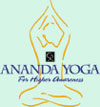Keyword:
Shaking arising from Stretching (April 2003)
ORIGINAL QUESTION:
I have a student who has developed a strong shaking in her leg when it is being held in any kind of hamstring stretch, but especially in Supta padanghustasana (she's on her back with the leg upraised). I've known her several years and watched it grow worse. She says it isn't painful, and she's not straining at all.
But it just starts shaking. I don't know what to tell her. I told her I'd look into it, so do any of you have any experience with this? I'd appreciate any insight.
Donna O'Neil
Eugene, OR
AYTA '95
ANSWERS:
From Rory Foster:
Dear Donna,
The shaking might indeed be coming from the hamstring, actually a shortened hamstring. If so, the culprit is probably the Psoas or Iliopsoas Muscle, which plays such a primary role in posture and in connecting the torso to the pelvis and legs. One of its primary functions is hip flexion and that affects the engagement of the hamstring. I suspect that her hamstring is in a shortened
position due to the pelvis not being in a neutral position. During "Supta Padanghustasana",look to see if she is "tucking under to an extreme" in the pelvis with the small of her back strongly imprinted on the floor. If so, the Psoas is probably over-stretched thereby impeding the hip flexor and shortening the hamstring. Have her hold her foot with a strap or towel so she can keep her pelvis in neutral while extending her leg, or even slightly tilted forward, creating a slight hollow in the small of her back--this will cause the Psoas to be in a neutral to moderately stretched position, thus giving more release to the hip flexor and allowing lengthening in the hamstring.
Since this has been going on for some time, there might be a muscle memory (habit) postural problem with the Psoas and accompanying internal scar tissue (resistance/stiffness). Doing a parallel lunge against the wall with the spine in neutral (straight),and "kapotasana", single pigeon pose, are very beneficial stretches for the Psoas.
Good luck! Blessings,
Rory Foster, AYTT 2002
I would tell her to get to a neurologist, speaking as a Family Nurse Practitioner and Yoga Teacher.
Suzanne Kohl
This is Susan Hayes, AYTT from August 1999. My e-mail address is
susan@mountaintopyoga.com.
Here's what it says in the May 2003 issue of "Fitness" magazine about
shaking:
"Q.:My muscles start to shake when I'm strength-training. What's causing
this?
A.: It could be muscle fatigue, says John Jakicic, an assistant professor of health, physical and recreation education at the University of Pittsburgh.When you're tired, the chemicals that transmit information from nerves to muscles become depleted. The result: The muscle starts to spasm. Try going a little lighter with your weights, and lift only until you feel the muscles beginning to fatigue. 'It could also be an indication of low blood glucose, calcium or potassium levels,' adds Jakicic. Eat a light snack a couple of hours before exercising. If the shaking continues or appears early in a workout, consult your doctor."
Donna: I'd refer her to her doctor. This is because I just completed a
workshop for teaching yoga to people with multiple sclerosis. Some of the symptoms of MS are spasticity and tremors. Of course, you don't want to freak out your student; MS is not diagnosed unless the individual displays at least three symptoms that characterize the disease (the most common ones are fatigue and heat intolerance). But an MD should look into it, just incase.
Take care! Susan
|







